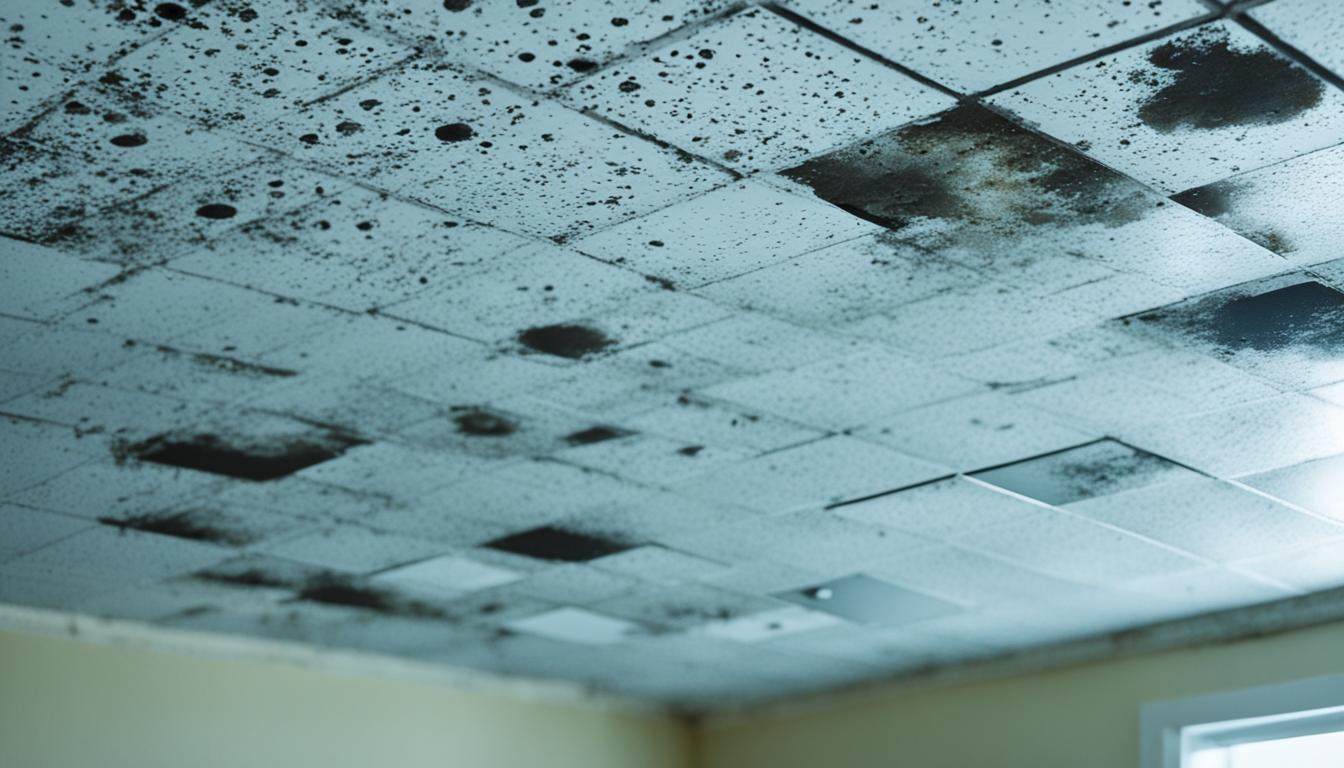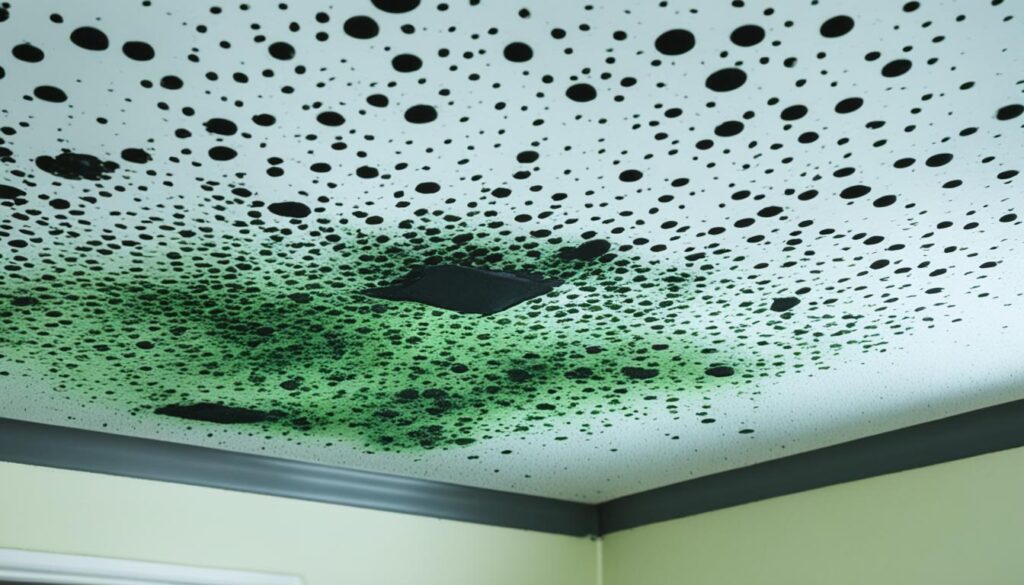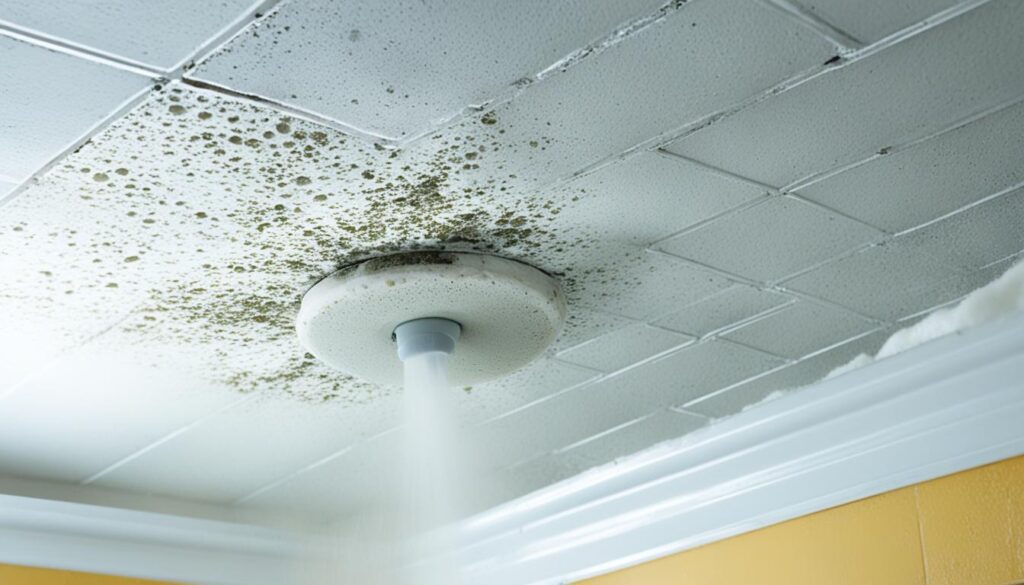
Unlocking the Mystery of Mold bathroom ceiling: What You Need to Know
Welcome to our comprehensive guide on dealing with mold on bathroom ceilings. If you’ve ever walked into your bathroom and noticed unsightly mold growth on the ceiling, you’re not alone. Mold can be a persistent problem in bathrooms, but with the right knowledge and strategies, you can identify, remove, and prevent mold, creating a cleaner and healthier home environment for you and your family.
Key Takeaways
- Identifying mold on bathroom ceilings is essential for prompt action.
- Removing mold using effective methods helps eliminate it safely and efficiently.
- Preventing mold growth through proactive measures ensures a mold-free bathroom.
- Maintaining a cleaner and healthier home environment is achievable with proper mold management.
- If you need professional assistance, contact Fix Mold Miami at 305-465-6653.
Understanding the Causes and Signs of Mold on Bathroom Ceilings
When it comes to mold on bathroom ceilings, it’s essential to understand the causes and be able to identify the signs of its presence. By doing so, you can effectively tackle the problem at its source and prevent it from recurring. Let’s explore the common causes of mold growth and the signs that indicate its presence.
Causes of Mold on Bathroom Ceilings
Mold thrives in environments with excess moisture and poor ventilation, making your bathroom ceiling a prime breeding ground. The following are some common causes of mold growth:
- Inadequate ventilation: Insufficient airflow in the bathroom can trap humidity and moisture, creating the perfect conditions for mold.
- Leaking pipes or fixtures: Water leaks or drips from pipes, faucets, or showerheads can lead to moisture accumulation, promoting mold growth.
- Poor insulation: Improper insulation in the bathroom ceiling can cause condensation, resulting in moisture buildup and mold formation.
- High humidity levels: Areas with high humidity, such as bathrooms, are prone to mold growth if moisture is not properly managed.
By addressing these underlying causes, you can significantly reduce the risk of mold growth on your bathroom ceiling.
Signs of Mold on Bathroom Ceilings
Identifying the signs of mold on your bathroom ceiling is crucial for prompt action. Look out for the following indicators:
- Visible discoloration: Mold often appears as black, green, or brown patches on the ceiling surface.
- Musty odor: If your bathroom has a persistent musty smell, it could be a sign of hidden mold growth.
- Peeling or bubbling paint: Moisture from mold can cause the paint on your ceiling to crack, peel, or bubble.
- Water stains: Dark or discolored spots on the ceiling indicate past or ongoing water intrusion, which can lead to mold.
- Allergic reactions: If you or family members experience allergic symptoms like sneezing, coughing, or a stuffy nose when in the bathroom, it may be due to mold presence.
Being vigilant about these signs will enable you to take immediate action and prevent further mold growth.
Now that we have an understanding of the causes and signs of mold on bathroom ceilings, let’s move on to the next section, where we’ll explore effective methods to remove mold from your bathroom ceiling.

Effective Methods to Remove Mold from Your Bathroom Ceiling
Mold growth on the bathroom ceiling can be unsightly and pose health risks. It’s crucial to remove mold promptly to maintain a cleaner and healthier home environment. In this section, we will share effective methods to remove mold from your bathroom ceiling, providing step-by-step instructions and recommending products and techniques to safely and efficiently eliminate the mold.
Step 1: Preparation
Before starting the mold removal process, ensure you have the necessary materials and equipment:
- Disposable gloves
- Protective eyewear
- Respirator mask
- Mold removal cleaner or bleach
- Scrub brush or sponge
- Hot water
- Clean towels or rags
Step 2: Ventilation
Open windows and doors to promote airflow and ventilate the bathroom during the mold removal process. This will help reduce the concentration of mold spores and prevent their spread to other areas of your home.
Step 3: Clean the Affected Area
Using the mold removal cleaner or a solution of bleach and hot water (1 part bleach to 10 parts water), thoroughly scrub the mold-infested area. Gently scrub the surface, paying particular attention to the mold stains.
Pro Tip: Do not mix bleach with ammonia-based products, as this can create toxic fumes. Always follow the instructions on the cleaning products and use them in a well-ventilated area.
Rinse the area with clean water and wipe it dry with towels or rags. Make sure to dispose of the towels or rags in a sealed bag to prevent further contamination.
Step 4: Dispose of the Mold
Place any mold-infested materials, such as curtains, towels, or shower mats, in a sealed plastic bag for disposal. This will prevent the spread of mold spores during the removal process.
Step 5: Preventing Future Mold Growth
After removing the mold, it’s crucial to take preventive measures to avoid its recurrence. Here are some tips:
- Ensure proper ventilation by using exhaust fans or opening windows during and after showers.
- Wipe down the bathroom ceiling regularly to remove excess moisture.
- Repair any water leaks or plumbing issues promptly to prevent mold-friendly environments.
- Consider using mold-resistant paint or coatings on your bathroom ceiling.
By following these effective methods to remove mold from your bathroom ceiling and implementing preventive measures, you can maintain a mold-free and healthier bathroom environment.

| Product | Description | Price |
|---|---|---|
| Mold removal cleaner | An effective and specialized cleaner designed to remove mold and prevent its growth. | $9.99 |
| Bleach | A cost-effective option for removing mold when diluted with water. | $3.99 |
| Scrub brush | A durable brush specifically designed for scrubbing away mold stains. | $6.99 |
Preventing Mold on Your Bathroom Ceiling: Tips and Advice
Mold growth on your bathroom ceiling can be a frustrating and unsightly problem. However, with the right preventative measures, you can maintain a mold-free environment and ensure a healthier bathroom for you and your family. Here are some valuable tips and advice to help you prevent mold growth in the first place:
1. Ventilate your bathroom
Proper ventilation is essential for preventing mold growth in your bathroom. Make sure your bathroom has a functioning exhaust fan or window to allow for adequate airflow. This helps to remove excess moisture, reducing the chances of mold growth on the ceiling.
2. Use a dehumidifier
If your bathroom tends to be excessively humid, consider using a dehumidifier. This device helps to remove moisture from the air, creating a less favorable environment for mold to thrive.
3. Repair leaks promptly
Water leaks can contribute to mold growth on your bathroom ceiling. Be proactive in addressing any leaks in your bathroom plumbing, including faucets, pipes, and showerheads. Prompt repairs can help prevent moisture buildup and potential mold problems.
4. Regularly clean and dry your bathroom
Regular cleaning and drying of your bathroom can go a long way in preventing mold growth. Clean any visible mold or mildew promptly using a suitable cleaner. Additionally, wipe down surfaces, such as walls, tiles, and the bathroom ceiling, after showers or baths to remove excess moisture.
5. Use mold-resistant paint
Consider using mold-resistant paint on your bathroom ceiling. These paints contain additives that inhibit mold growth, providing an extra layer of protection against mold and mildew.
6. Keep an eye on humidity levels
Monitor the humidity levels in your bathroom to ensure they stay within an optimal range. Ideally, humidity levels should be kept below 50% to discourage mold growth. Use a hygrometer to measure humidity and make adjustments as necessary.
“By implementing these preventative measures, you can maintain a clean and mold-free bathroom, promoting a healthier living space for you and your family.”
By following these tips and advice, you can take proactive steps to prevent mold from taking hold on your bathroom ceiling. Remember, prevention is vital to creating a healthier, mold-free environment in your bathroom.
Conclusion
In conclusion, tackling mold on your bathroom ceiling is essential for maintaining a healthier and cleaner home environment. By understanding the causes and signs of mold, you can take proactive measures to prevent its formation and ensure the well-being of your family.
To effectively remove mold from your bathroom ceiling, follow the recommended methods and techniques shared in this article. By using the right products and following step-by-step instructions, you can eliminate mold safely and efficiently, restoring the cleanliness of your bathroom.
Prevention is key when it comes to mold. Implement the tips and advice provided in this article to keep mold at bay and create a mold-free bathroom environment. Regular maintenance, proper ventilation, and moisture control are crucial in preventing mold growth and ensuring a healthier living space.
If you require professional assistance in mold assessments, prevention, or remediation, don’t hesitate to contact Fix Mold Miami at 305-465-6653. Their expert team is equipped to handle any mold-related issues and can help you maintain a mold-free home.




